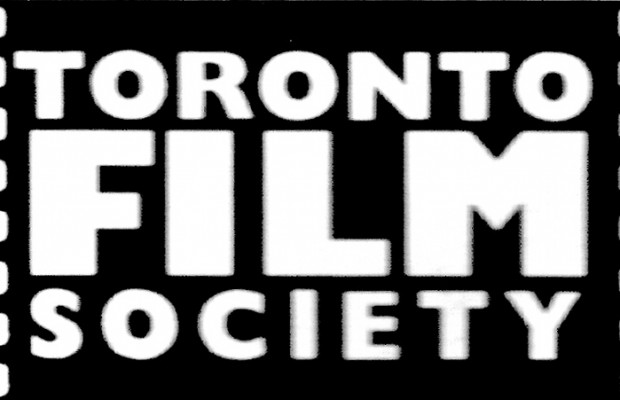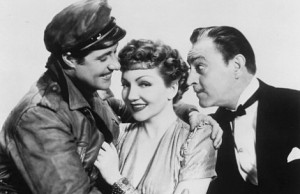Newsletter Winter 1984-85
By Toronto Film Society on May 8, 2014
UNDER A BUSHEL
One of the things of which I used to be proudest about my country was that it was not nationalistic. When I was growing up Canadians generally tended to think of themselves as part of a larger community–The British Empire (later the British Commonwealth of Nations), the North American community and, ultimately, the world community. The kind of narrow nationalism so prevalent in the U.S., whose interests began and ended at the country’s borders, was held up as a bad example. I think that one of the reasons Canada played such a significant role in the early days of the United Nations was that this organization represented exactly the mind-set of a great many of the well-educated class of Canadians and one that had existed here long before there was a United Nations.
Unfortunately, I must use the phrase “used to be” because for the last couple of decades the jingoists have increasingly seized the attention of the media and, much more importantly, have occupied seats of power in this country. This trend has reached such comic-opera proportions that, for example, I have witnessed an Australian executive of the St. Lawrence Centre tell an English actress that she could not appear there because she was not Canadian!
Canada’s traditional unselfconsciousness nationally, based as it was upon a deep, unspoken self-confidence in our worth that made strident nationalism unnecessary, was a trait the loss of which is sad, but it must be admitted that it had its dark side and that was our failure to give the kind of full recognition to the achievements of our own people that would have been a matter of course in almost any other country.
To give just one example, how many Canadians know that two world-shaping concepts–standard time and state-owned telegram systems–were originated here by a Canadian of Scots origin? Hint: this renaissance man also personally designed the first Canadian postage stamp, introduced decimal currency in Canada and engineered the great system of railways that forged a group of isolated colonies into a nation.
Another example of this national failing to recognize “our own” occurred to me when I read the TFS Programme Notes for our showing of The Private Life of Henry VIII in our 1984 Summer Series and found not a mention of the contribution to that movie of Osmond Borradaile. Because of the Draconian space limitations imposed by the Board of Directors upon the Programme Notes for that series (and observed for all films except Richard III), the note writer cannot be faulted for not commenting upon Mr. Borradaile, but to omit his name from even the credits was inexcusable.
Osmond Borradaile’s credit on this movie was a somewhat unusual one, which flashed by so quickly that I can no longer recall it, but essentially what he did was what he did throughout his career and that was to contribute some of the finest second-unit location photography being done by anyone, anywhere in the world. He was, and is, internationally recognized as one of the finest artists working in that field. No matter what else you carry in your memory about that movie, I dare say that you will never forget the power, tastefulness and immediacy of the beheading scenes. Those, along with every other exterior shot in the picture, were the work of Osmond Borradaile.
The earliest movies were all location shoots–a train pulling into a station, workers leaving a factory, etc. Soon, however, movie-makers found that they wanted the greater control over the medium possible by shooting in a studio. When the invention of klieg lights freed the industry from dependence upon the sun, the process was completed and movies became so studio-bound for decades that if a picture was shot on location it was sufficiently unusual to be played up in the advertising.
Despite the strong prejudice in favour of studio and back-lot shooting, some stories virtually demanded location shooting in order to achieve verisimilitude and thus the “second unit” was born. Working without the expense of the major stars, director or producer, the second unit was free to add that touch of reality so necessary at a modest cost, whether working on the other side of the world or just on the other side of the back lot. On major productions there would often be a second unit director, but in many cases the second unit director of cinematography would be, in effect, his own director. Even many of the most gifted cinematographers were ill equipped by experience and aptitude to cope with the many problems raised by dealing with the raw reality of location shooting and thus a breed of specialists gradually came into being. It was in this specialty that Osmond Borradaile achieved world recognition, although he was a distinguished studio director of cinematography.
I first heard about Osmond Borradaile from Oscar Burritt, one of the founders of the film society movement in Canada and of TFS in particular, and, as I so often do, I wish Oscar were still around to be asked to fill in the frailties of my memory. Oscar was a distinguished cameraman and I believe the two men may have been friends, may even have worked for the same newsreel companies together (newsreels were a fecund source for second unit photographers. What I do recall are long conversations in which he extolled the artistry of Mr. Borradaile and how he coped with the multitudinous unexpected problems that were daily routine of a second unit photographer. Oscar was not free with his praise and I knew that to elicit such admiration the man I was learning about must be someone very exceptional indeed.
Osmond Borradaile was one of the very first specialists in second unit cinematography. He was born July 17, 1898, in Winnipeg and completed university in British Columbia. He had just broken into Hollywood in 1914-5, working in the camera department of Jesse L. Lasky Productions, when service in the Canadian Army during W.W.I. interrupted his career. He rejoined the company, now known as Paramount, in 1919 and in 1929 was transferred to their Paris branch.
In location photography, dealing with difficult and even dangerous terrain and with every extreme of weather and climate was a matter of daily routine, but we sometimes do not realize in these days of hand-held, miniaturized equipment is the inherent problems created by the weight of the equipment then used and the touchy nature of nitrate film. Not only was the latter inherently dangerous (it is essentially the same chemical composition as TNT), but whole cans of expensive footage could be ruined by excessive heat or rendered brittle by excessive cold. Where sound was required, the weight and cumbersomeness of the equipment went up exponentially.
He went to London in 1930 and linked up with Alexander Korda, marking the turning point of his career. Korda’s sweeping, Empire-girdling spectacles afforded Borradaile his world-wide reputation and there is little doubt that the reverse is also true and that the characteristic “look” of these pictures is largely due to him. For Borradaile, as for Korda, The Private Life of Henry VIII (1933), broke through into a world market and world fame. He again did all of the exteriors on The Scarlet Pimpernel (1935) and was the co-director of cinematography on Sanders of the River in the same year, for which he did all of the African footage that lay at the heart of this picture. The Elephant Boy in 1936 was another triumph on which he did all of the outdoor Indian footage as second unit photographer for the great Robert Flaterty who was assigned that portion of the picture, again the portion which “made” the picture.
India was again the location for this second unit work on Drums (1938) and he was co-director of photography on The Four Feathers, doing all the location work. The Lion Has Wings (1939) was followed by the magnificent The Thief of Baghdad (1940) on which he was again co-director of cinematography, doing all of the exteriors.
A gap in his credits as given by the reference books suggests further war work during W.W.II, but he was back with The Overlanders (1946).
His international reputation brought him back to Hollywood for The Macomber Affair (1947), but it was back to Britain again for Bonnie Prince Charlie and Scott of the Antarctic (both 1948). Next came Howard Hawks’ zany I Was a Male War Bride in 1949, the last of his Hollywood pictures I could find recorded.
At long last the Canadian movie industry developed sufficiently to give him a worthy project in Royal Journey, a feature-length National Film Board documentary of the 1951 visit by Princess Elizabeth and The Duke of Edinburgh to Canada and the United States, released in 1952 in colour. Shamefully, the NFB no longer distributes this outstanding movie, directed by David Bairstow, but it tested Mr. Borradaile’s abilities to the utmost in gathering together the feel of this whirlwind tour despite the difficulties inherent in getting just the right shot in the jostling tumult of huge crowds and dealing with “actors” who could not be asked to do a re-take!
With this experience, it was only natural that Mr. Borradaile would be tapped to shoot Queen Elizabeth’s Coronation in 1953. It was apparently all he could do to keep a straight face when the typically-overbearing Technicolor “consultant” from Hollywood announced that she was going to advise the Royal Family on what clothes to wear in order to get the best Technicolor colour effects.
The last of Osmond Borradaile’s movies I have found listed was his return to second unit photography for the British/Canadian co-production The Trap (1966), fifty-two years after his first Hollywood job.
His country honoured him min 1983 with the Order of Canada and at that time he was enjoying a happy and well-earned retirement at the age of 85 in West Vancouver, British Columbia.
by R. R. Anger
You may also like...
-
News

Thank You from TFS!
Toronto Film Society | July 21, 2025Our matinée on Sunday, August 17th – at the blessedly air conditioned Paradise Theatre – will conclude the Toronto Film Society’s 77th season! But take heart, as we’ll be...
Programming

Sunday Afternoons at the Paradise
Toronto Film Society | September 28, 2025Join TFS for Season 78’s Sunday Matinée Series. Please save this date and visit us regularly for further updates on the films, added shorts, and to purchase tickets: Sunday,...
-
 Toronto Film Society | July 16, 2025
Toronto Film Society | July 16, 2025
-
 Toronto Film Society | November 6, 2022
Toronto Film Society | November 6, 2022
-
 Toronto Film Society | August 1, 2023
Toronto Film Society | August 1, 2023
Donate to Toronto Film Society – We’re now a Registered Charity!
Copyright © 2017 Toronto Film Society.



